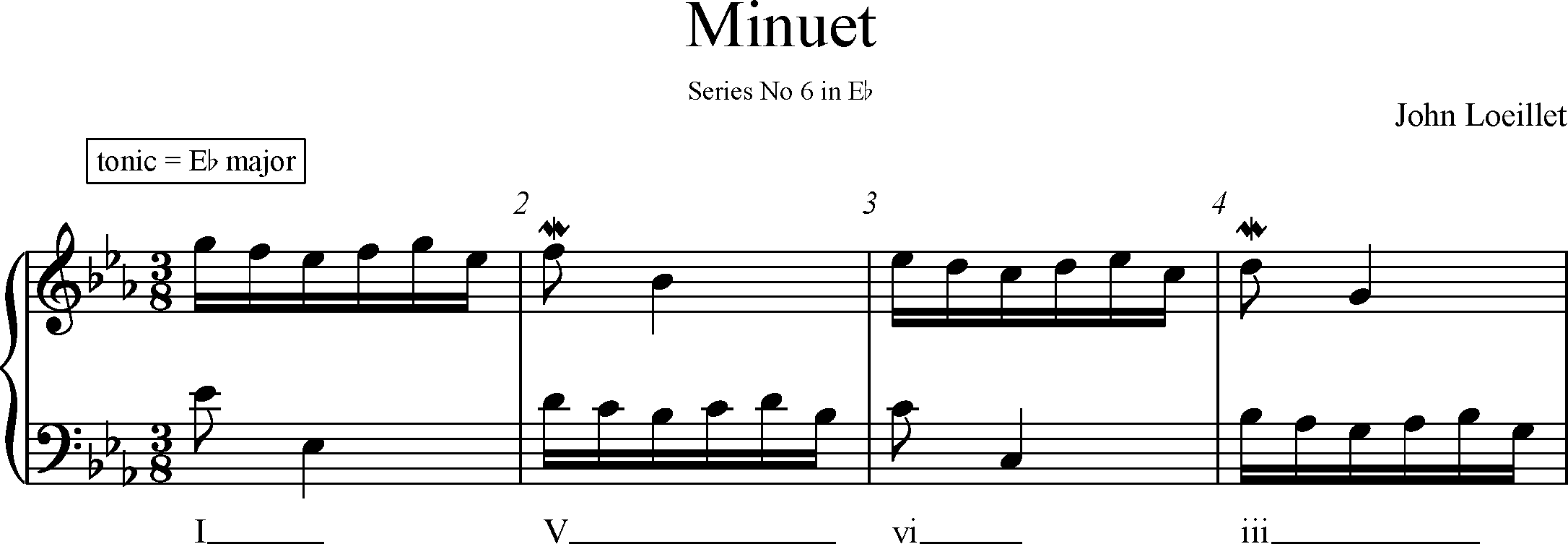B9 | Counterpoint
- Counterpoint means the method of combining various melodic lines.
- It’s a way of enriching a composition and this method reached a pinnacle towards the end of the Baroque period.
- Counterpoint is based on a harmonic pattern (vertical) and the individual characteristics of the melodies (horizontal).
- The features of effective counterpoint are:
- much contrary motion
- a variety of rhythms between the melodies
- harmonic intervals of a 3rd and 6th in general.
The excerpt below (figure 1) comes from a work by John Loeillet and shows different kinds of counterpoint if you compare the beginning and the ending of the minuet.
Fig. 1

Notice how the character of the bass line has changed from being a voice imitating the treble at the start of the piece, to a contrasting line by the end of the piece.

Further listening
By the beginning of the Classical period composers had moved away from textures that were quite so contrapuntal and towards more homophonic textures. However, there are excellent examples of composers of the late Classical period rediscovering counterpoint and incorporating it in their works, e.g. operas by Mozart, Don Giovanni and Così fan tutti, and his symphony number 41 (Jupiter). Beethoven’s Große Fuge, (Great Fugue, op.133) for string quartet is hailed as one of his greatest masterpieces.
https://www.youtube.com/watch?v=XAgdd2VqLVc (with score)
https://www.youtube.com/watch?v=13ygvpIg-S0 (Alban Berg Quartett)
In the early Romantic period, Mendelssohn used a contrapuntal texture in his oratorio Elijah in the chorus Blessed are the men who fear him (op.70, 9). Notice the way he increases and decreases tension with the density of lines as well as the harmonic pattern.
Exercises
Composition task
Compose 8 bars of counterpoint for two-handed keyboard or two instruments.
